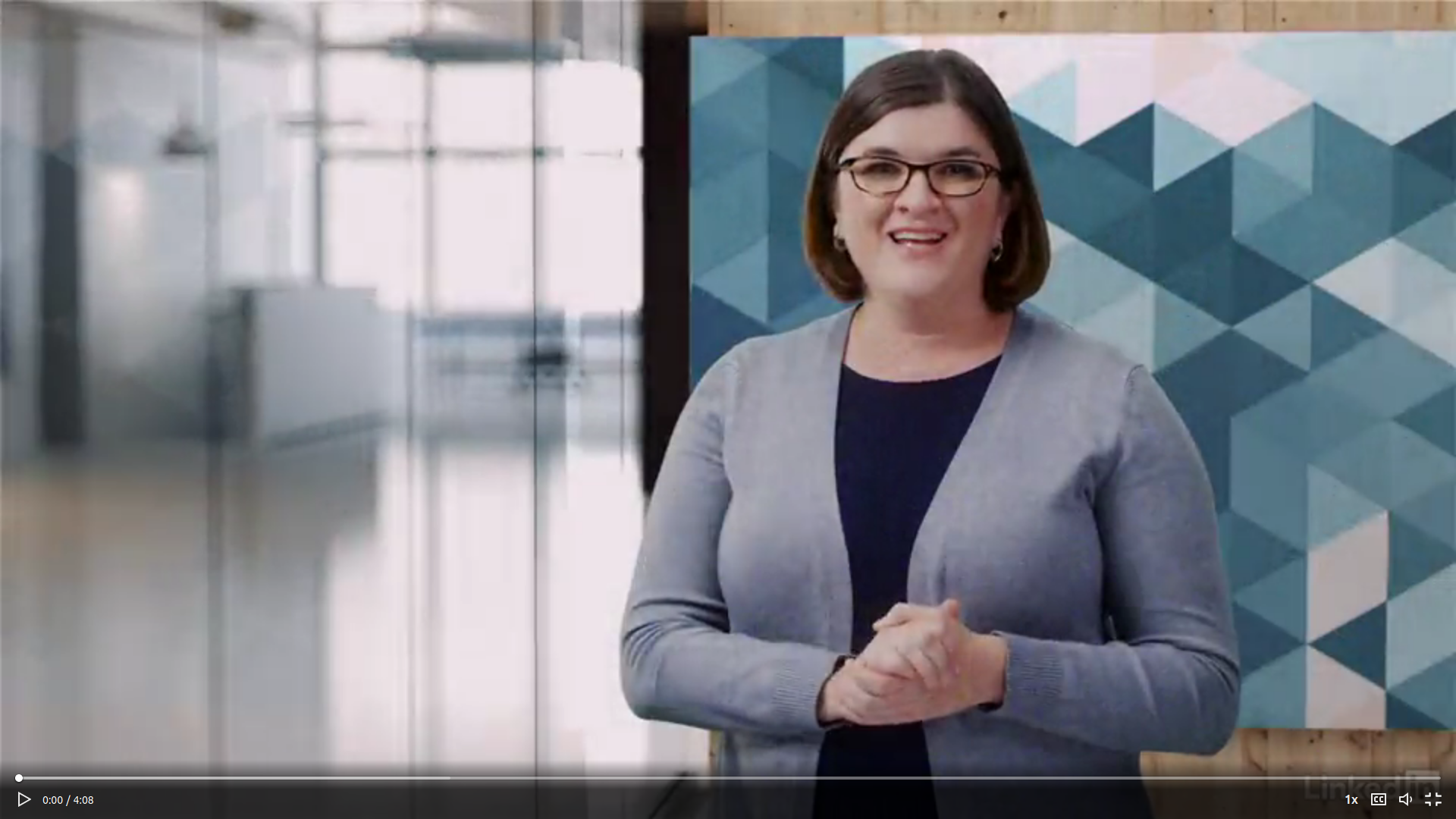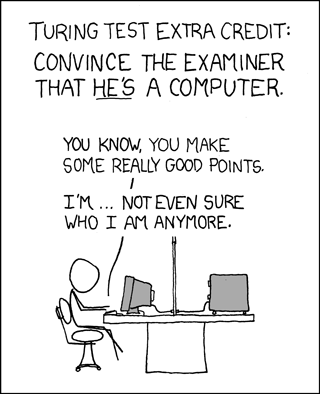Turing Test & Chatbots (2): Discussion & Turing Test

1. Introduction
In today's DataLab session, we will discuss the article Computation Machinery and Intelligence, and perform an experiment called the Turing Test.
Before/after the workshop you have time to work on the independent study material or creative brief, and/or ask the lecturers for feedback.
2. Workshop
The workshop consists of two parts: class discussing on the article, and the Turing Test (timeslot: 13:30 - 16:00). When conducting the Turing Test, we will make use of the chatbots that were found online by you, and/or your fellow students.
2.1 Discussion
Article: Computing Machinery and Intelligence (Turing, 1950).
Reading guide: How to read a paper (Kezhav, 2007).
Chatbot: ELIZA (Weizenbaum, 1966).
In-class exercises, instructions by lecturer.
2.2 What are chatbots?
Chatbots, also referred to as conversational agents, are software applications that mimic human behaviour (i.e. written or spoken speech) with the means to stimulate an interaction with a real person. If you have ever used an customer service live chat, you probably have interacted with such an conversational agent. It is estimated that by 2022, 75% to 90% of customer service inquiries are processed by bots operating on conversational AI technology (CNBC, May 9, 2017). It is fair to say, chatbots are here to stay.
2.2a Watch video on chatbots and virtual agents by Angela Wick.
 Video 3. Chatbots and virtual agents by Angela Wick.
Video 3. Chatbots and virtual agents by Angela Wick.
2.2b Find a general purpose/universal chatbot that is accessible via a weblink, and answer the following questions:
- When was it created?
- Who created it?
- Why was it created?
It is important to include evidence of your findings (e.g. webpage link of chatbot, newspaper article, academic journal article etc.).
Example: Cleverbot (Carpenter, 1997).
2.2c The Loebner Prize is an annual competition where AI researchers try to convince a group of ‘judges'/interrogators that their conversational bots are human by answering set of questions (i.e. Turing Test). Can you list, and describe any other competitions in the field of AI?
2.3 Strategy
Before we conduct the Turing Test, we need to devise a strategy to convince the ‘judges'/interrogators that our chatbot is not a machine but a real human being. Together with your fellow group members you are going to develop such a strategy by drawing up a setting, and its corresponding conditions and questions. After the experiment, we will find out which group passed the test, and which group failed the test.
2.3c How to tell the difference between a robot and a human?
Can a robot:
- be creative?
- gossip?
- fall in love?
- tell a joke?
- have empathy?
- cause annoyance?
If answered with ‘no', to what extent do you think robots will be able to his in the future?
Questions to think about:
- What characterizes us as being human?
- How would you define intelligence
- Can a machine/robot/computer be considered intelligent?
- Can a machine/robot/computer think for itself?
2.3b Devise a strategy to fool the ‘judges'/interrogators. Incorporate the following elements:
- Setting (e.g. discussion between two students during a political theory class)
- Conditions (e.g. show sense of morality)
- Questions (e.g. ‘I have very controversial views on politics, on democracy in particular. Do you think I'm a bad person for preferring a benevolent dictatorship?')
2.4 Turing Test

Figure 1. Turing Test, and the existential crisis…
In-class experiment, instructions by lecturer.
Literature
Gilchrist, K. (2017, May 9). Chatbots expected to cut business costs by $8 billion by 2022. CNBC. Retrieved June 16, 2021, from https://www.cnbc.com/2017/05/09/chatbots-expected-to-cut-business-costs-by-8-billion-by-2022.html
Keshav, S. (2007). How to read a paper. ACM SIGCOMM Computer Communication Review, 37(3), 83-84.
Turing, A. M. (2009). Computing machinery and intelligence. In Parsing the Turing test (pp. 23-65). Springer, Dordrecht.